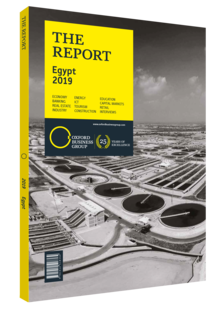Central Bank of Egypt hikes interest rates to stabilise the pound
As the Central Bank of Egypt (CBE) has attempted to stabilise the country’s currency in recent years, the banking sector has been placed in a challenging position. At the macro level, an overvalued Egyptian pound following the 2011 revolution acted as a brake on investment and undercut economic growth, with the consequence being a reduced appetite for loans. A devaluation of the currency in late 2016 led to an almost immediate 50% drop in the currency’s value, which restored investor sentiment but resulted in a troublesome inflationary trend. Upward pressure on prices was further exacerbated by the removal of subsidies on fuel, electricity and basic foods, and the introduction of a new value-added tax framework. The response of the CBE to these developments was to hike interest rates: two rate rises in quick succession in 2017 marked the end of a period of loose monetary policy.
Mixed Views
For some observers, the CBE’s decision to raise interest rates was the wrong one. Proponents of this view held that raising interest rates during a time of low lending growth ran counter to economic orthodoxy by increasing the cost of debt and thereby running the risk of undermining economic expansion by throttling lending to the private sector at a crucial stage in the nation’s recovery.
Moreover, while interest rate hikes might be acknowledged as a challenging but unavoidable response to rising inflation in most circumstances, in the Egyptian context its efficacy was doubtful: with around 33% of the population in possession of a bank account, according to the World Bank, monetary policy via interest rates is a less productive approach in Egypt than in countries with higher levels of financial inclusion.
Policy Shift
In determining monetary policy the CBE focuses on seasonally adjusted monthly inflation trends and monitors an array of indicators, including GDP growth, the current account balance, credit growth, real interest rates, banking liquidity and real wage growth. By the beginning of 2018 movement of these indicators suggested that the CBE had room to act. The CBE’s shift in policy came in February 2018, when it reduced its deposit and lending rates to 17.75% and 18.75%, respectively. This pivot to a looser policy stance became more pronounced the following month, when the deposit rate was lowered again, this time to 16.75%. The lending rate, meanwhile, fell to 17.75%. These rates remained unaltered for the rest of the year, during which time the Monetary Policy Committee of the CBE met a further five times.
The accumulated 2% cut in policy rates for 2018 was less than the 5% prediction that some analysts had made at the outset of the year. Nevertheless, the loosening monetary policy is generally regarded as a positive development for Egypt’s banks. The lower lending rate means that businesses that have delayed expansion plans as a result of high interest charges may find that lower borrowing costs are sufficient to spur them into action, which will translate to more business for the domestic banking industry. The decline in the cost of deposits, meanwhile, will have a positive effect on banks’ profitability. In 2018 there were some early signs of an improving credit scenario: Commercial International Bank, the largest private sector lender in the market, announced that it had expanded its loan book by 13% over the first half of the year.
Looking Ahead
The interest rate debate has continued into 2019, and a number of factors suggest that policy rates should rise once again. These include a rise in inflation rates in the final quarter of 2018 and a need to maintain the pound’s attractiveness.
Acting as a counterbalance to these concerns, however, is the government’s desire to reduce the nation’s budget deficit from 9.8% of GDP in FY 2017/18 to 8.4% in FY 2018/19. Thanks to Egypt’s indebtedness to its banking industry, by some estimates a percentage rise in interest rates may result in a LE35bn ($2bn) expansion of the state budget deficit. Both sides of the rate debate, therefore, have solid arguments to hand.
You have reached the limit of premium articles you can view for free.
Choose from the options below to purchase print or digital editions of our Reports. You can also purchase a website subscription giving you unlimited access to all of our Reports online for 12 months.
If you have already purchased this Report or have a website subscription, please login to continue.

